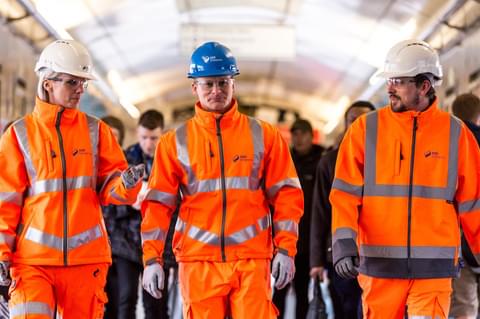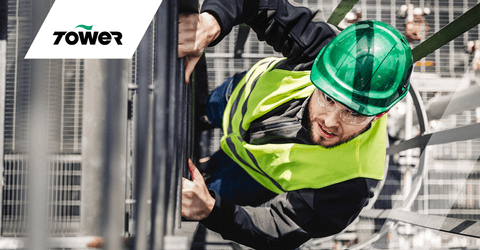
We give you everything you need to know about Hi Vis classes including how many classes there are, how they're different, and why rail workers only wear orange.
When your team is in a hazardous situation, PPE at work is essential, specifically, they need to wear Hi Vis safety vests. This is because they’re made with highly reflective materials that keep individual workers visible, especially at night.
All Hi Vis safety vests must comply with the EN 20471 standard for safety, categorised in classes based on the amount of both reflective material and high contrast Hi Vis fabric making up the vest.
It’s important you understand the differences between the classes of Hi Vis to ensure your workers are safe. The general rule is, the more hazardous your workplace, the more visible they need to be.
There are three classes of Hi Vis, determined by the total area of fluorescent material and reflective stripe that is on the wearer. Each class is more suited to a particular working environment and risk.
The below table shows you the amount of material that’s needed to be visible in the smallest sized Hi Vis garment to achieve a particular class rating, excluding the wearing of any labels or logos.
All class 1 Hi Vis items should have a minimum of 155 square inches of reflective tape, with 0.10m² reflective material and 0.14m² fluorescent material. The reflective stripes should be around the middle in a 360º stripe and above each shoulder.
Class 2 Hi Vis must have a minimum of 201 square inches of reflective tape, with 0.13m² reflective material and 0.50 m² fluorescent material. Reflective stripes should be over the shoulders and around the middle in either one or two 360º horizontal stripes.
Class 3 vests must have a minimum of 310 square inches of reflective tape, with 0.20 m² reflective material and 0.80m² fluorescent material. Headlights approaching a worker should be able to make out the silhouette of a person.

This is the lowest level of Hi Vis classification. The most important think to know is, it is NOT suitable for working roadside or near road traffic.
Class 1 Hi Vis is suitable for those working in low-risk and low-impact areas, as it offers the lowest level of visibility. Class 1 usually involves single garments such as Hi Vis trousers worn on their own.
This class of Hi Vis is typically used by parking attendants, delivery drivers, and roadside assistance personnel in low traffic areas.
This is most commonly sleeveless vests. Class 2 Hi Vis clothing is only suitable on roads where the speed limit is less than 40mph
Class 2 is most suitable for working near heavier traffic and in low visibility areas. The weather may reduce visibility in these areas and traffic flow may exceed 25 mph.
Class 2 Hi Vis vests are typically worn by airport workers, high-volume parking or toll booth operators, as well as forest workers.
Class 3 Hi Vis is the highest level and applies to sleeved tops. It can be made up of different garments or be a single garment. Examples include Hi Vis bomber jackets and Hi Vis long sleeved vests.
Class 3 Hi Vis is reserved for those that work close to high-traffic areas, including site inspectors, emergency responders, railway workers, and utility crews.
Traffic in these areas may be close to or exceed 50 mph. These workers typically work right next to the road or in other hazardous areas, so they should be as visible as possible to prevent injury.

EN ISO 2471 Hi Vis must be worn and maintained correctly in high-risk situations. But RIS-3279-TOM compliant Hi Vis must be worn when working near a railway. Here’s everything you need to know.
RIS-3279-TOM (formerly GO/RT 3279) is a vital requirement that applies to the UK rail industry for those working near a railway where visibility, in any light condition, is needed.
RIS-3279-TOM is designed to provide rail drivers, engineers, and permanent way professionals with a clear warning of the presence of people on the lineside or near the line.
Unlike Saturn yellow Hi Vis, worn by those operating train signals, rail workers always wear orange. This is to avoid any confusion for train drivers and to maximise safety near the rails.
RIS-3279-TOM is also orange because much of work done on or near tracks is in rural areas where yellow is more common, making orange stand out for better visibility for train drivers.
The background fabric, retro-reflective material, and design of the garment must meet the requirements of EN ISO 20471, with fluorescent and reflective areas meeting a Class 2 minimum.
Network Rail have also implemented a ‘Full Orange Policy’. This means that all individuals must be FULLY dressed in Hi Vis orange. A Hi Vis vest without Hi Vis trousers will NOT be sufficient.
Guide to Hi Vis classes